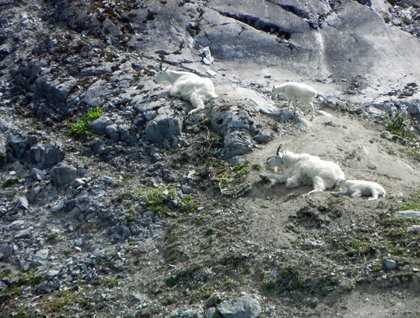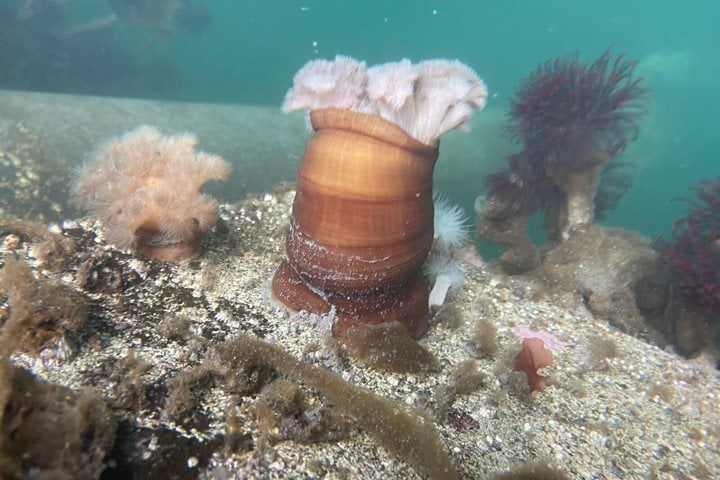Silvery grey clouds of early morning wreathed the peaks of Glacier Bay as we began our day of exploration. Our first point of interest was a slow cruise through the South Marble Islands, which are the seasonal habitat of a few dozen sea lions and an uncountable array of birds, including gulls, pigeon guillemots, common murres, commorants, kittiwakes, and puffins. Our National Park Rangers Nelson and Jakara were on the front deck showing us how the birds arranged themselves at different levels from the top of the island to sea level and some peculiarities of their eating and nesting habits. As we moved past the islands we returned inside to hear about the Native history of Glacier Bay from Alice, our cultural interpreter, a Huna Tlingit whose ancestors occupied Glacier Bay long before the relatively recent advance and retreat of the glaciers. Following Alice, Ranger Jakara outlined the major features of the Glacier Bay environment and gave us a preview of the day to come traveling up to the head of the bay.
Our next point of interest up the bay was Tidal Inlet where we found no fewer than five brown bears foraging the shoreline and slope. Interestingly all of the bears exhibited some shade of blonde color. Most of the bears displayed only patches of blonde to rusty blonde hair, but one cub was totally blonde. The two bears and two cubs further up the Inlet displayed some highly developed climbing skills, moving expertly up and down steep scree slopes looking for their snacks.
Just around the corner from tidal inlet is a remarkable outcropping of rock known as Gloomy Knob. Here we found in abundance another signature animal of Glacier Bay—mountain goats. We spotted eight altogether, including several nanny kid pairs lounging in the grass as sunny skies began to emerge. Also emerging from the clouds was the glorious spectacle of the Fairweather Range with peaks rising higher than 15,000 feet almost immediately above the sea in the bay. However the scenic highlight of our journey was a trip into Johns Hopkins Inlet. At Jaw Point we were able to look five miles straight down an ice-choked fjord to the face of Johns Hopkins Glacier and marvel at the ice clad mountains rising vertically above.
As we began our return trip to Bartlett Cove, two more highlights ensued. First was an ice cream glacier demonstration. This involved vanilla ice cream, whipping cream and oreo cookies representing different parts of a glacier as it flowed down a cookies sheet from the mountains to the sea. Then the audience got to eat the glacier! Alice also gave a presentation on the Hunas that gave us a personal understanding of what it was like to be part of her very special culture.
Our day in the bay ended with a short but very scenic hike through the forest that has grown at Bartlett Cove since the retreat of the Grand Pacific glacier that occupied this area just 200 years ago. All in all a day with all of the essential elements—great scenery, great wildlife, and good company that will provide a lasting memory of Glacier Bay National Park.







